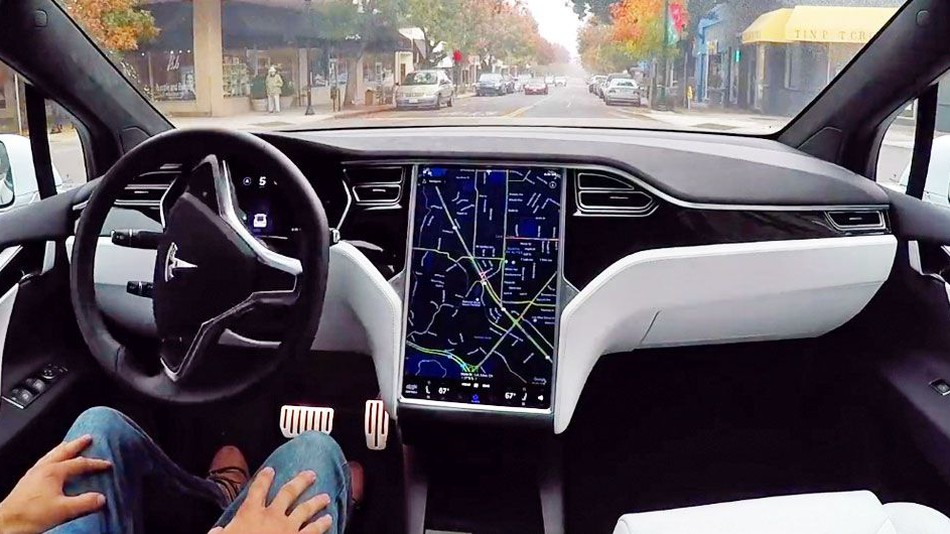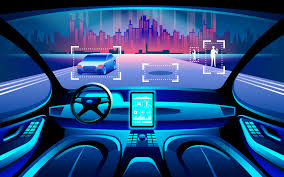The proceeding with the advancement of car innovation plans to convey significantly more prominent security benefits than prior advances. At some point, mechanized driving frameworks, which some allude to as robotized vehicles, might have the option to deal with the entire errand of driving when we would rather not or can’t do it without anyone’s help.
The Evolution of Automated Safety Technologies
Many vehicles on the road today have driver assistance technologies, which help to save lives and forestall wounds on our country’s streets. While a few driver help innovations are intended to caution you assuming you’re in danger of an approaching accident, others are intended to make a move to stay away from an accident.
The proceeding with the development of car innovation, including the driver, help advances and robotized driving frameworks, mean to convey significantly more noteworthy wellbeing benefits.
What is a Self-Driving Car?
While talking about auto help frameworks’ phrasing, nobody settles on what to call anything in this field. From designing a language to showcasing talk, the dialect keeps on advancing.
Generally talking, you can sort the advances individuals may allude to as self-crashing into two classifications – driver backing and robotization frameworks. Peruse on to perceive how they contrast.

Driver Support
Driver support innovation lessens the responsibility on the driver. Today, most automakers sell different driver emotionally supportive networks, either as standard hardware or as choices on their vehicles. These incorporate canny or versatile voyage control, path keeping helps, and without hands ability.
According to SAE, levels zero through two are viewed as driver support highlights, while levels three through five are delegated having independent capacity.
Level 0
At Level 0, the vehicle responds just to the driver’s feedback. Regardless of whether it utilizes sensors to caution you of encompassing traffic, similar to a vulnerable side ready framework or a path takeoff cautioning, it actually has no self-driving ability to right or counter the apparent danger.
Level 1
At Level 1, your vehicle can mediate marginally in your driving trying to protect you. A path-keeping framework that assists steer with focusing you in a path is a Level 1 innovation.
Level 2
At Level 2, highlights speak with each other, and beyond what one can be dynamic at the same time. An illustration of this independent innovation is a versatile journey control framework that changes your speed to stay away from the vehicle ahead while focusing the vehicle in its path.
At present, Level 2 frameworks are the most refined innovation sold on vehicles in America. A few automakers portray these frameworks in manners that cause them to appear to be further developed than Level 2 norms since they permit drivers to take their hands off the controlling wheel momentarily. Notwithstanding, this multitude of frameworks expect drivers to keep their eyes centered ahead. Drivers should be prepared consistently to assume control over the control of the vehicle immediately.
Level 3
At Level 3, the vehicle can drive itself under restricted conditions, yet the driver should stay mindful and ready to dominate. Automakers have tried Level 3 frameworks that will permit the driver to take their hands off the wheel stuck, for example, however, brief the driver to assume control over when the blockage facilitates.
Level 4
At Level 4, the vehicle can drive itself in a proper circle on known streets. The rider isn’t needed to assume control throughout driving whenever. These vehicles might possibly have a directing wheel or pedals. In certain spots, Level 4 driverless rideshare vehicles (like Waymo’s) are in restricted testing. However, they are not yet supported for general use in any state.
Level 5
At Level 5, the vehicle can drive itself under any conditions and on any street. These vehicles don’t have to direct wheels or pedals. Now, Level 5 frameworks are hypothetical.
Which Cars Have Self-Driving Capability?
Essentially every automaker selling vehicles in the U.S. today offers driver-help frameworks that can diminish the responsibility on the driver. These incorporate versatile journey control that can change speed to avoid the vehicle ahead or programmed crisis slowing down that can slow or stop the vehicle to try not to hit a vehicle or passerby or decrease the seriousness of an accident.
However, these frameworks are generally not so solid that the driver can take their consideration from the errand of driving.
Numerous producers presently market frameworks up to and including Level 2 computerization. This approach joins versatile voyage control and path-keeping help into a framework that necessitates that the driver keeps their hands on the wheel yet frees some from the driver’s responsibility.
A great representation is voyage control with unpredictable capacity that permits the driver to haggle weighty traffic without utilizing the pedals.
The Future of Self-Driving Cars

Engineers from more than a dozen companies are trying self-driving frameworks in order to create an SAE Level 5 self-driving vehicle. It appears to be protected to anticipate that the innovation is coming.
Be that as it may, the design test of arriving is huge. A vehicle that can drive itself on all around kept up with streets might commit a basic error on inadequately kept up with streets. Imagine a scenario in which a vehicle that can respond securely to typical traffic may not respond securely to strange circumstances. A vehicle that can do all that specialists request from it might bomb when given an issue they never thought of (in one late occurrence, a self-driving vehicle in testing was confounded by a truck bed brimming with traffic signs being conveyed to a building site. The vehicle had no clue about what to do).
Past the designing test, 50 arrangements of state laws (in addition to the District of Columbia) should adjust to conclude wellbeing and risk issues before self-driving vehicles can become normal.
The market will likewise express its opinion. Volkswagen as of late revealed an idea vehicle that would charge by the mile for self-driving ability. Leaders contemplated that insofar as getting your vehicle to drive you someplace costs under a train pass to that equivalent spot, they could charge for utilizing their driving element. Thus, while certain automakers desire to charge purchasers forthright for computerization, others might make it accessible for transient rental as it were.
Ultimately, there’s the question of showcasing. It’s now becoming hard to sort how producers guarantee their vehicles can treat what they can really do. That will just become cloudier as the innovation propels.
In this way, while you might have the option to possess a self-driving vehicle in the course of your life, it could be further away than propelling innovation would demonstrate.
Also, Read :
Packaging additives fueled by increased use of packaging material

